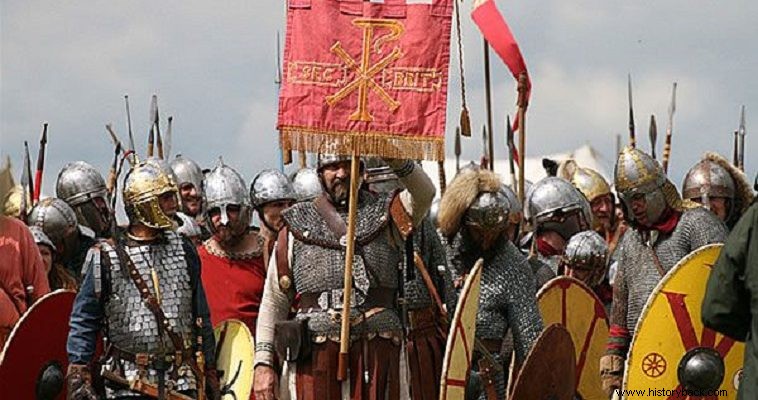
At the end of the 6th and the beginning of the 7th c. A.D. on the Danube appeared a new threat to the Byzantine Empire, that of the Avars. The Avars were a Mongolian race – the Turks, especially Erdogan, consider them their “brothers” – who, by subduing various Slavic, but also Germanic races, created an extensive state in the northern Balkans.
The Avars had many and good cavalry. Their infantry consisted of vassal Slavs and Germans. From the Danube, the Avars began raiding the Byzantine provinces, forcing Emperor Maurice to send the general Priscus to the region to intercept them.
Priscus he reached the Danube, and ordered reconnoitring parties of the army to cross to the north bank of the great river, to ascertain the strength of the enemy. The Avars spotted the Byzantine units and attacked them, threatening them with annihilation. Fortunately, the hard-pressed vanguard managed to inform Priscus of the difficult position in which he had fallen, and so the Byzantine general, gathering all available watercraft and building rafts, crossed the river with his entire force and hastened to help the vanguard, as it happened. The Avars retreated.
Priscus then divided his force into three parts, which he ordered in square formation, so that they could not be threatened by the Abarian horsemen, and moved against them, in the enemy's hinterland. The Avars attacked the Byzantine squares for hours, but suffered great damage. Finally, they were forced to retreat, leaving behind 4,000 dead, compared to approximately 300 Byzantines.
Priscus after his victory did not hurry. He rested his army, but at the same time sent scouting parties throughout the surrounding area gathering information about the enemy and the terrain. Thus, seven days after his first victory, he moved again against the Avars. This time he again ordered his army into three divisions, but conventionally, seeking to provoke the Avars to attack him. So it happened. But then, as he had originally planned, his forces retreated slightly, took menoid formations and, literally, surrounded the enemy.
In a few minutes, surrounded by ¾, the Avars were massacred . Leaving behind the 9,000 dead they fled in disorder. Priscus, following the same tactics, again rested his army, and six days after his second victory again moved against the enemies. His scouts informed him that the Avars were advancing against him from a point, behind which there was a marsh, in the vicinity of Viminacium. So if he attacked them directly, he would trap them between his army and the marsh.
Priscus waited for nothing else, but, putting himself, personally, at the head, ordered the army to run! The Byzantines, indeed, succeeded and arrived first on a hill that dominated the area, having in front of them, the surprised Avars. The latter, as it were, formed a monolithic line of battle, which completely neutralized their overwhelming advantage in number and quality of cavalry. Priscus immediately attacked.
With lances extended and banners flying, the Byzantine cavalry charged, with incredible speed, crushing, with the first impact, the enemy line. Panicked, the Avars began to flee towards the marsh. Thousands met an ignominious end there. More than 15,000 Avars perished, including four of the sons of their khan, Bayan.
Losing no more time, having annihilated the main enemy force, Priscus pursued the defeated enemies for 20 days continuously, killing 57,000 enemies.
